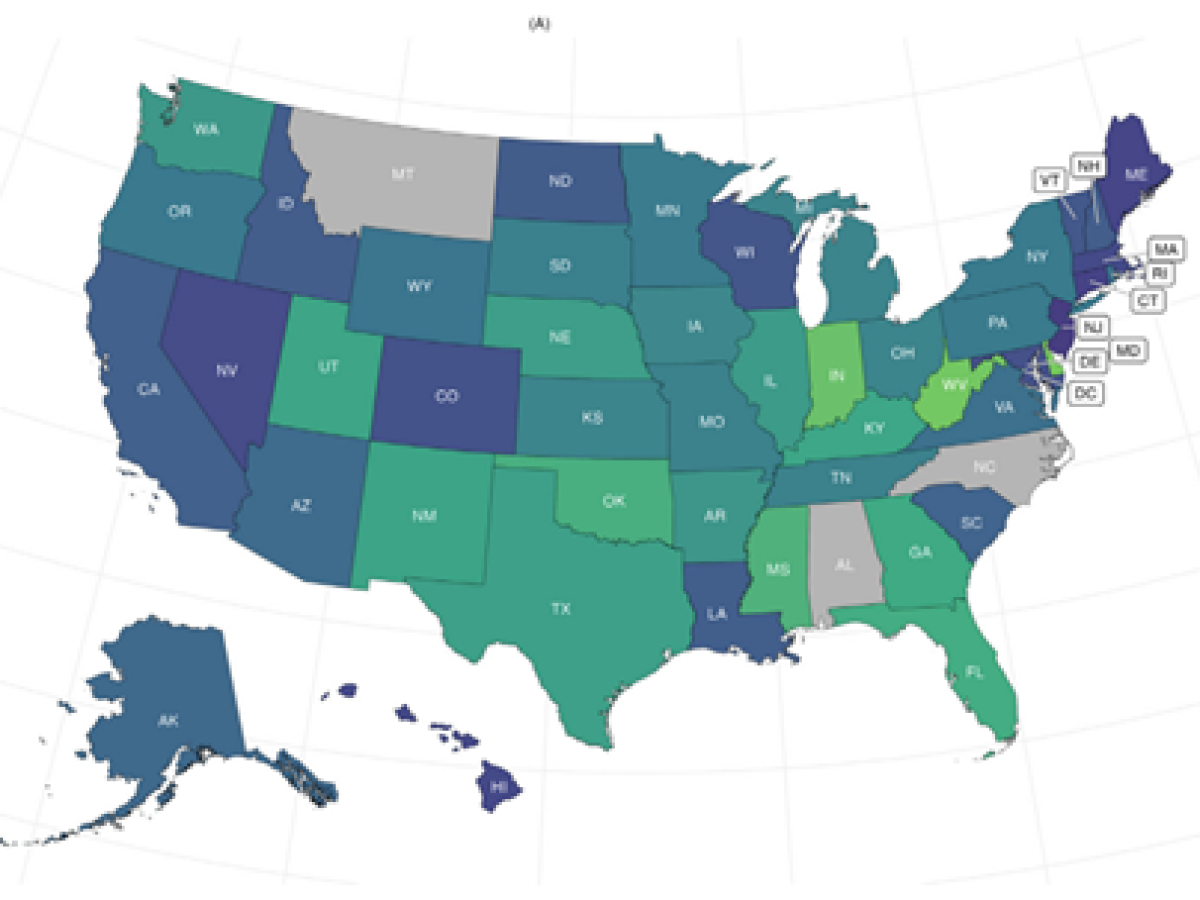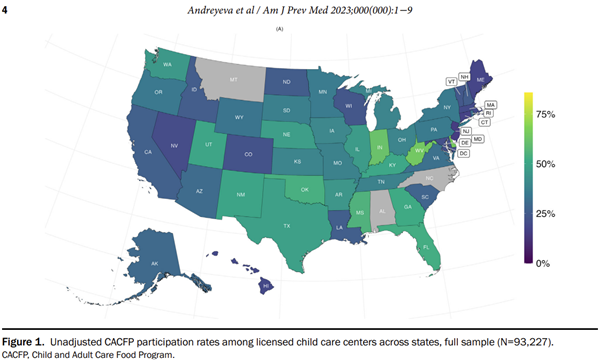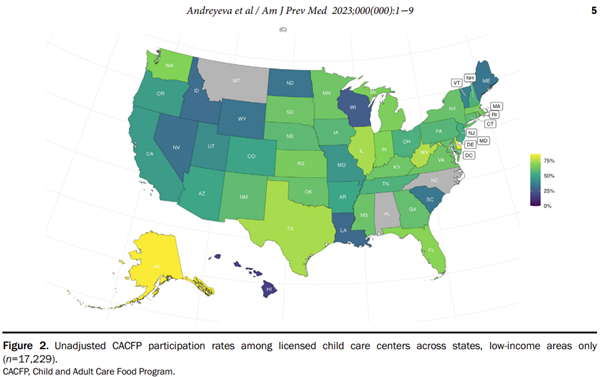CACFP Underutilized and Unequally Accessed
November 15, 2023

A study was published in September of 2023 to assess the extent and reasons for the operation of the CACFP's among licensed child care centers in order to identify opportunities for expanding CACFP nutrition support. The study found that the CACFP is underutilized and that there is unequal access in certain states and regions.
Why It Matters
The CACFP ensures that millions of children and adults across the nation receive the nutritious meals they need for proper health and development. The CACFP has been associated with reduced food insecurity among the participants of the program. Therefore, access and uptake of the program is important to decreasing hunger for some of our most vulnerable populations.
Participation Results
On average 36.5% of licensed child care centers participated in the CACFP across states (ranging from as low as 15.2% to as high as 65.3%). USDA’s Southeast region had the highest participation rate, while the West and Mountain plains regions had the lowest.

In low-income areas where CACFP coverage was a priority, the participation rate was 57.5% on average. Higher-income areas had an average participation rate of 31.8%. Some states had as high as 85.7% participation rates in low-income areas, while others had as low as 15.7%.

Predictors of CACFP Participation of Low-Income Areas
- Having at least three CACFP sponsoring agencies of unaffiliated centers within the state was associated with a 38% higher CACFP participation rate.
- States with higher SNAP participations rates also had higher rates of CACFP center participation.
- Census tracts with higher education and higher proportions of non-Hispanic White residents had lower CACFP participation rates.
CACFP Underutilized
The average participation rate of CACFP (57.5%) in low-income areas is considerably lower than the estimated coverage rate for SNAP (82%), but similar to the average WIC participation rate (56.9%). Underutilization of the CACFP can have potentially significant financial implications. Previous research estimated that underutilization in Connecticut left 20,300 children from low-income households without CACFP-subsidized meals – costing the state $30.7 million in foregone federal funds. These funds could have given an economic boost to child care providers.
Sponsors of Unaffiliated Centers Could Expand Access
Other research has found that there are many barriers to CACFP participation and suggested policies to address them. Given the positive association between the number of sponsoring organizations serving centers and CACFP participation, addressing the issue of limited or unavailable sponsors for centers is another possible venue to target for CACFP expansion. Although centers could work directly with the state, working with a sponsor could make the process easier, especially for smaller centers with more limited resources. Sponsors provide important technical assistance and training, including access to software, development of qualifying menus, documentation maintenance, and access to qualifying food, which could greatly reduce the burden of program participation.
Despite the sponsors’ critical role in supporting CACFP, particularly for small centers, several states do not have any sponsoring agencies for unaffiliated centers or have only one sponsor.
For more information, read the full study: Federal Nutrition Assistance for Young Children: Underutilized and Unequally Accessed. The study was written by Tatiana Andreyeva, Timothy E. Moore, Lucas da Cunha Godoy, and Erica Kenney and published in the American Journal of Preventive Medicine.
